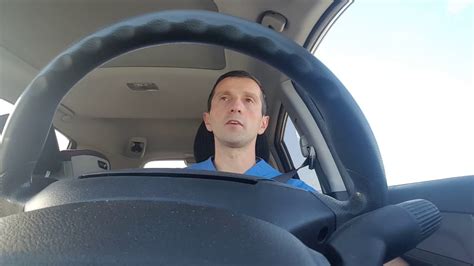Breathe Better While Driving: Simple Filter Solutions for Cleaner Air
Driving can be a significant part of daily life for many, and spending hours behind the wheel exposes you to a surprising amount of pollutants. Poor air quality in your vehicle can lead to headaches, fatigue, allergies, and even respiratory issues. Fortunately, improving the air you breathe while driving is easier than you might think. This article explores simple filter solutions to enhance your in-car air quality and promote healthier breathing during your journeys.
What Pollutants Are You Breathing in Your Car?
Before we dive into solutions, let's understand the problem. Your car's air isn't as clean as you might assume. Sources of in-car pollutants include:
- Exhaust fumes: Even with a properly functioning exhaust system, some fumes can seep into the cabin, particularly if you're stuck in traffic or driving behind a vehicle emitting excessive pollutants.
- Road dust and pollen: These particles enter through open windows or even tiny gaps in the seals.
- Vehicle interior materials: New car smell? That's often the off-gassing of volatile organic compounds (VOCs) from plastics, fabrics, and adhesives used in the car's interior. These VOCs can persist for years.
- Bacteria and mold: These can accumulate in the air conditioning system, especially if it's not regularly cleaned.
- Cigarette smoke (secondhand smoke): If you've ever been in a car with a smoker, you know how pervasive this pollutant is.
What are the Simple Filter Solutions?
Several straightforward solutions can dramatically improve the air quality inside your vehicle:
1. Replace Your Cabin Air Filter Regularly:
This is the most fundamental step. Your car's cabin air filter traps dust, pollen, and other particles before they reach you. Most manufacturers recommend replacing it every 12-15,000 miles or once a year, whichever comes first. However, if you frequently drive in dusty or polluted areas, more frequent replacements are advisable. Knowing how to replace your cabin air filter is a simple DIY project; numerous online tutorials can guide you through the process for your specific car model.
2. Upgrade to a Higher-Efficiency Filter:
Standard cabin air filters offer basic filtration. However, you can find higher-efficiency filters, such as HEPA (High-Efficiency Particulate Air) filters or activated carbon filters, that capture a wider range of pollutants, including VOCs and even some gases. These filters often offer improved allergy relief.
3. Keep Your Air Conditioning System Clean:
A dirty air conditioning system is a breeding ground for bacteria and mold. Regularly cleaning or having your AC system professionally cleaned can significantly improve the air quality. This also helps maintain its efficiency.
4. Use an Air Purifier for Your Car:
Portable car air purifiers are becoming increasingly popular. These small devices use various filtration methods (often HEPA) to remove pollutants from the air within your vehicle's cabin. These are particularly useful for those with allergies or sensitivities.
5. Limit Exposure to External Pollutants:
While not a filter solution, reducing exposure to external pollutants is crucial. Avoid driving with windows down in highly polluted areas, and if possible, use recirculated air in your AC system to prevent outside air from entering.
How Often Should I Replace My Cabin Air Filter?
This depends on several factors:
- Driving conditions: Frequent driving in dusty or polluted environments necessitates more frequent changes.
- Manufacturer recommendations: Always consult your owner's manual for the recommended replacement interval.
- Visible dirt or debris: If your filter is visibly dirty or clogged, it's time for a replacement regardless of mileage.
What Type of Cabin Air Filter Should I Choose?
The best type of cabin air filter for you depends on your needs and priorities:
- Standard filters: Offer basic filtration, suitable for most drivers in relatively clean environments.
- HEPA filters: Capture a much higher percentage of airborne particles, ideal for allergy sufferers or those living in areas with poor air quality.
- Activated carbon filters: Effective at removing odors and gases, such as VOCs from vehicle interiors. A combination HEPA and activated carbon filter is a top choice for many.
Are Car Air Purifiers Worth It?
Car air purifiers can be a worthwhile investment for individuals with severe allergies, sensitivities to VOCs, or who frequently drive in heavily polluted areas. They offer a supplementary layer of filtration beyond what a standard cabin air filter can provide.
By implementing these simple filter solutions, you can significantly improve the air quality in your vehicle and enjoy healthier, more comfortable drives. Remember to consult your owner's manual and choose the filter options that best suit your individual needs and driving conditions.

